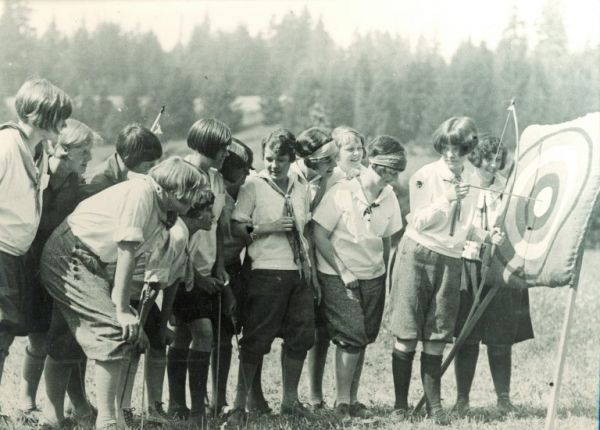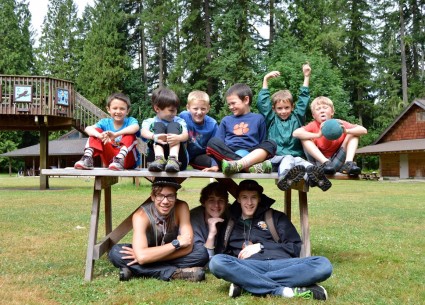THE 21ST CENTURY CAMP FIRE
Camp Fire launched in 1910, the same year as the first talking motion picture. Much like today’s films, the 21st Century Camp Fire is a whole different animal than it was 100 years ago—or even 20 years ago! Just as films have adapted to emerging technology, Camp Fire has evolved to better meet the emerging needs of kids and families.
While Camp Fire has historically been synonymous with outdoor learning and providing opportunities for women, today’s Camp Fire is a multi-faceted agency that serves all kids through a diverse array of programs. Camp Fire has long served the communities of Oregon and southwest Washington by providing high-quality youth development programming for nearly a century.

- In 1910, Camp Fire Girls was founded and became the first integrated, non-sectarian organization for girls in the United States.
- In 1911 programming in the Northwest began and groups in Forest Grove led expeditions to a campsite on the banks of the Willamette River near the present site of Dunthorpe. The organization gradually evolved and the Portland Council was officially chartered in 1921.
- In 1924, A 552-acre plot of forest land located at the confluence of the Sandy and Bull Run Rivers was generously donated to the Council by local lumberman Samual B. Cobb. This land would become known as Camp Namanu, and has been in continuous operation ever since.
- In 1975, Camp Fire became co-ed and changed its name to Camp Fire USA, reflecting its inclusive nature and values. The mission, building caring, confident youth and future leaders,
has remained solid throughout.
- Currently, Camp Fire offers an array of educational and recreational school year and summer programming and projects for youth in Washington, Clackamas, and Multnomah Counties.
HISTORICAL ARCHITECTURE AT CAMP NAMANU
“Pietro Belluschi put Portland on the cultural map.”
– Portland Monthly, September, 2006
- Pietro Belluschi was undoubtedly the most eminent architect to come out of Portland Oregon in the last century. In the late 1920s, as Namanu was growing in popularity, Belluschi was in the early stages of what would be a prolific and influential career. During that time, he designed several of Namanu’s most attractive buildings, which are still in use today. These simple structures helped to define the soul of Namanu in its early days.
- Belluschi came to America from Italy as an exchange student in 1923 and made his home in Portland, Oregon. He worked for many years with the renowned architecture firm A.E. Doyle and eventually took it over under his own name. While in Oregon, he designed such notable structures as the Portland Art Museum and the Equitable Building, the latter being considered one of his most important works as it is known as the first fully sealed air-conditioned environment.
- His fame grew as he emerged to become an international leader of the Modern Design Movement. In the later part of his career, Belluschi became known as an educator and lecturer and served as Dean of Architecture and Planning at MIT from 1951-1965. When he died at his home in Portland at the age of 94, he left behind a diverse and inspiring body of work totaling over 1,000 buildings.

